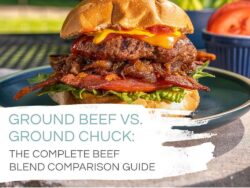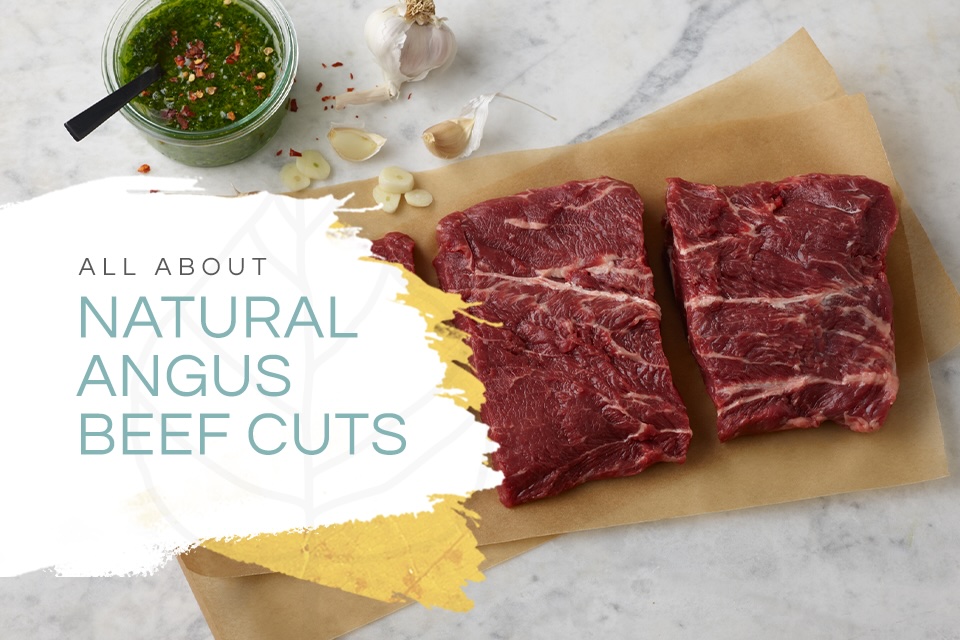
A Guide to Natural Angus: Beef Cut Charts and Cooking Tips
May 11, 2025 | Cooking with Beef, Natural Angus Beef
When it comes to beef cuts, most people recognize a few favorites—ribeye, sirloin, tenderloin steak, ground beef, or maybe a classic roast.
We’re here to set the record straight. A roast isn’t just a roast, and a steak isn’t just a steak. Understanding cuts like chuck eye roast, Denver steak, and short ribs doesn’t have to be intimidating. Whether you’re at the meat case or reading a menu, we’ll help make choosing the right cut easy.
This guide is here to help you understand popular beef cuts so you can shop and cook with complete confidence. We’ll talk about the basics, differentiate beef cuts by name (i.e., are filet mignon and tenderloin steak the same thing?), and explain how beef cuts vary in flavor, texture, and preparation. Let’s dig in.
Natural Angus Beef Cuts: The Basics
Before we get into some of the specific cuts, it’s important to have some background information on how it all works. Breaking down beef into recipe-ready products is a tiered process. Beef cuts can be categorized into four quarters that are then sectioned out, resulting in multiple categories of cuts—all of which point to the region that the meat comes from and provide insight into the flavor, tenderness, and marbling of the meat.
Primal and Subprimal Beef Cuts
There are two overarching categories of beef cuts: primal and subprimal cuts. Primal refers to one of the nine regions below. Use this chart as your guide to how tenderness and marbling vary by primal.
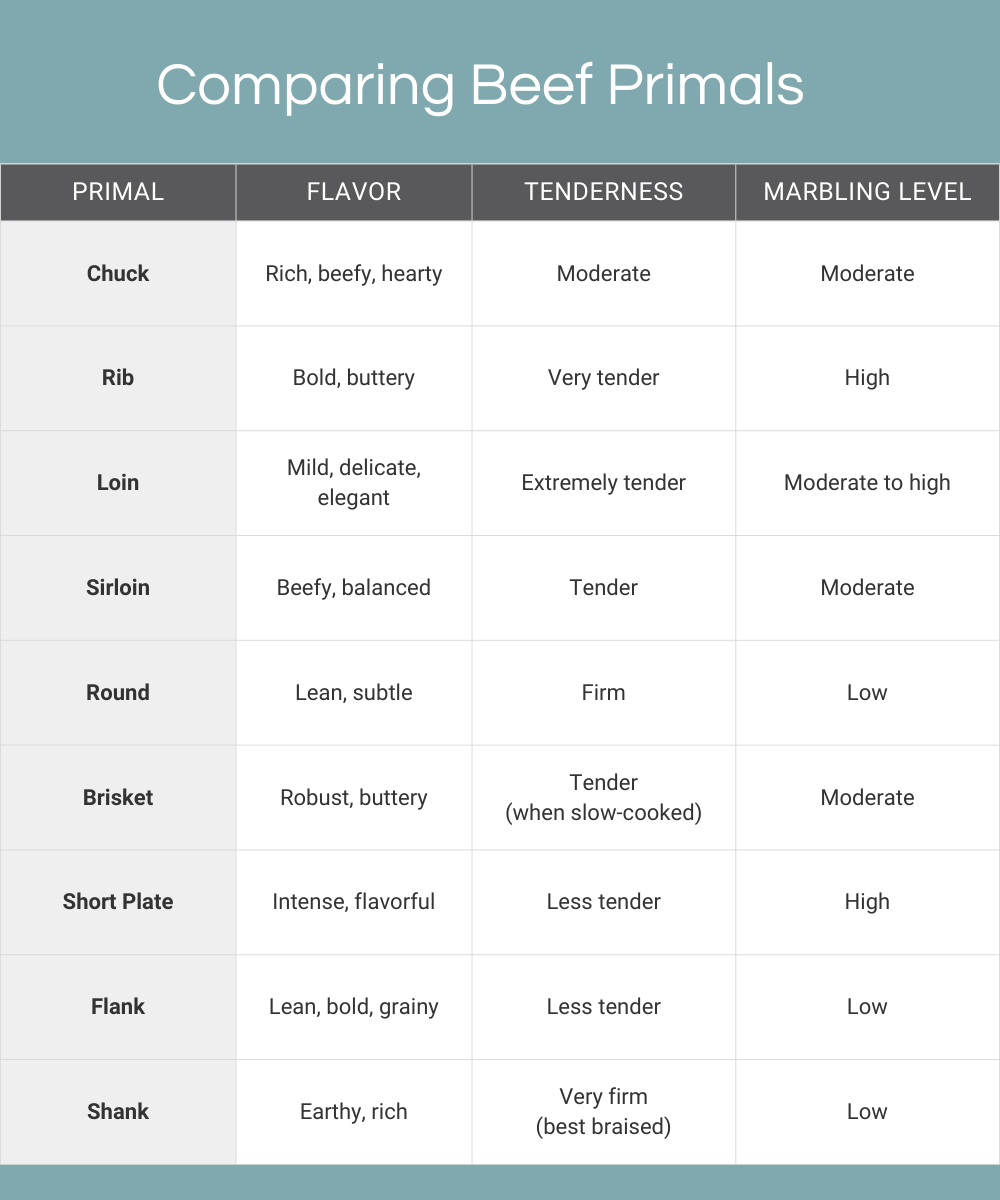
Primal cuts are then divided into subprimal cuts, such as tenderloin or short loin. What you see in the grocery store or on a restaurant menu (such as New York strip or T-bone steak) are products that come from the subprimal sections. Essentially, these are the products that have been portioned and are ready to eat—primal and subprimal cuts are usually too big to cook and consume at home, so they must be broken down before they’re sold.
Angus Beef Cut Chart: All About Commonly Sold Cuts
This handy beef cut chart from Beef. It’s What’s for Dinner. can give you a quick reference on commonly sold cuts and the best methods for cooking them.
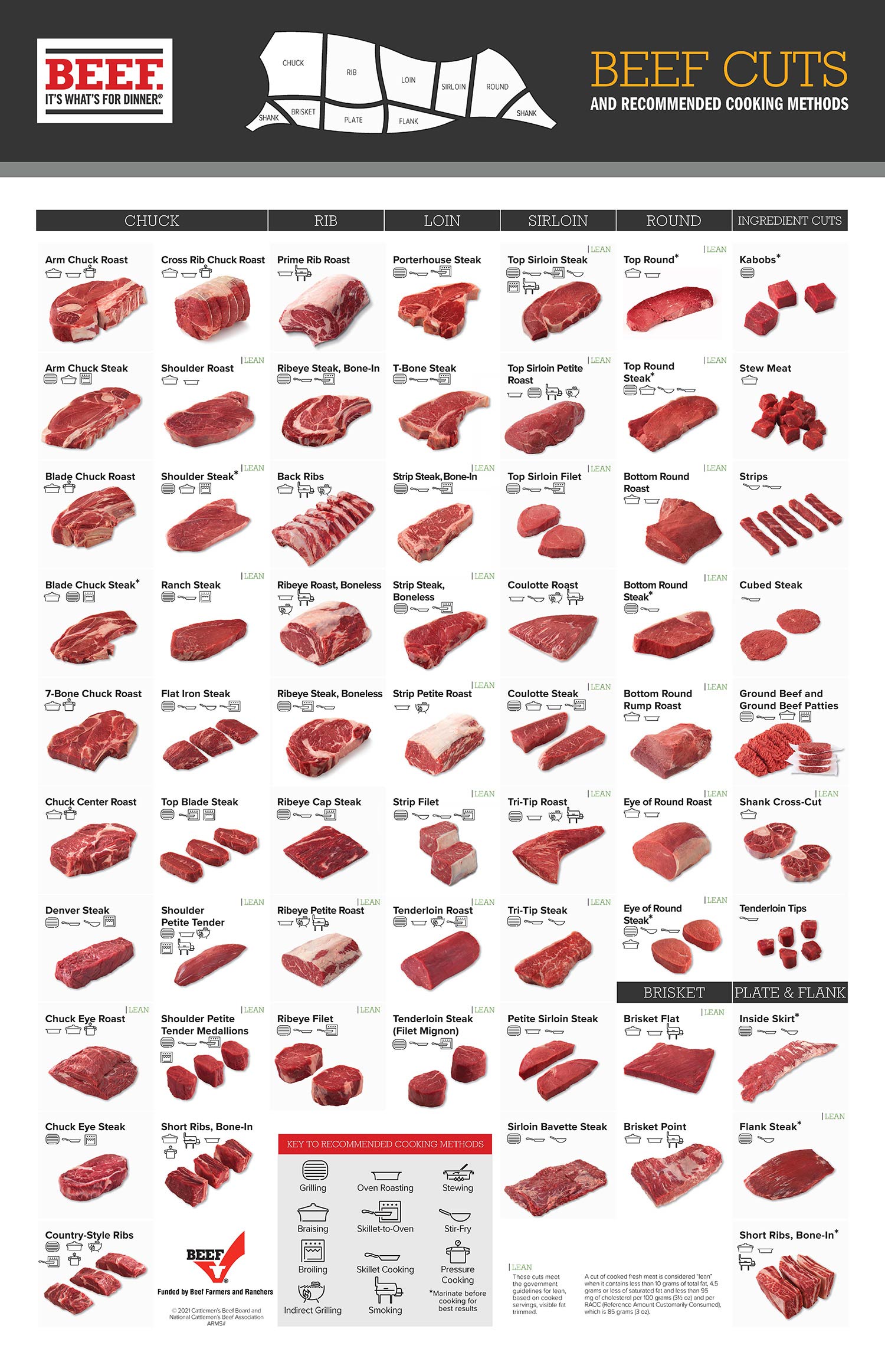
The Best Ways to Prepare Popular Angus Beef Cuts
Natural Angus Ribeye Steak: Rich & Juicy
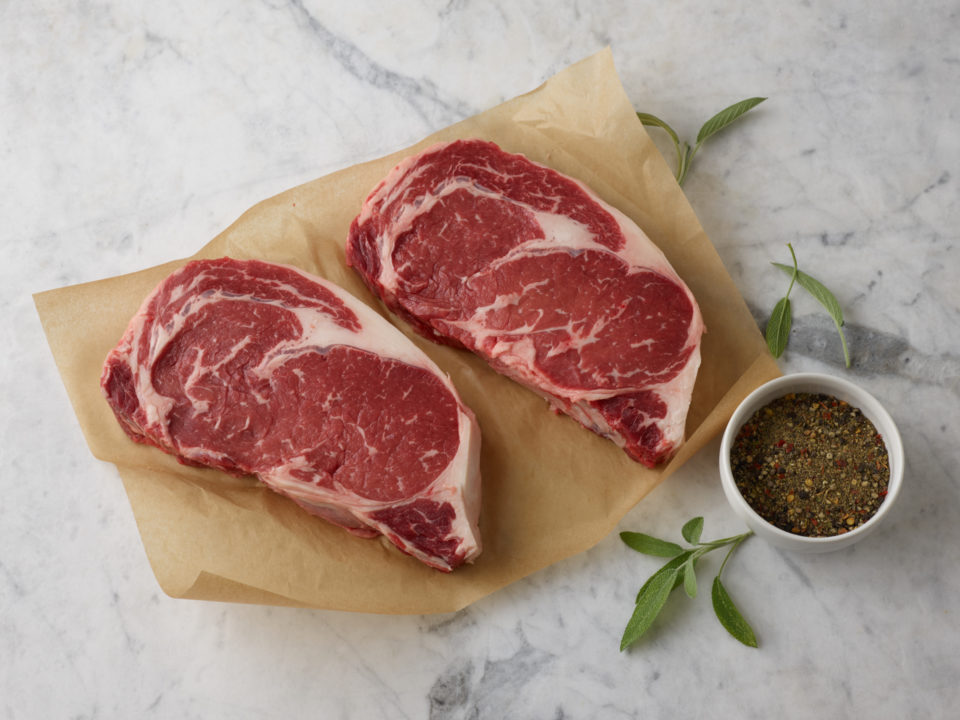
A favorite among beef lovers, the ribeye steak is a staple on any restaurant menu and meat case. It’s cut from the rib primal, making it well-marbled and tender. The Natural Angus ribeye steak is tasty whether fresh off the grill, smoked, or cooked in a skillet. You can choose a boneless ribeye for easy cooking or bone-in for an impressive presentation. For a tasty all-in-one meal, try Ribeye with Pan-Fried Corn or Grilled Ribeye with Garlic Fries.
Other great cuts from the rib primal: Prime rib roast, short ribs, and back ribs.
Natural Angus New York Strip: Fire Up the Grill
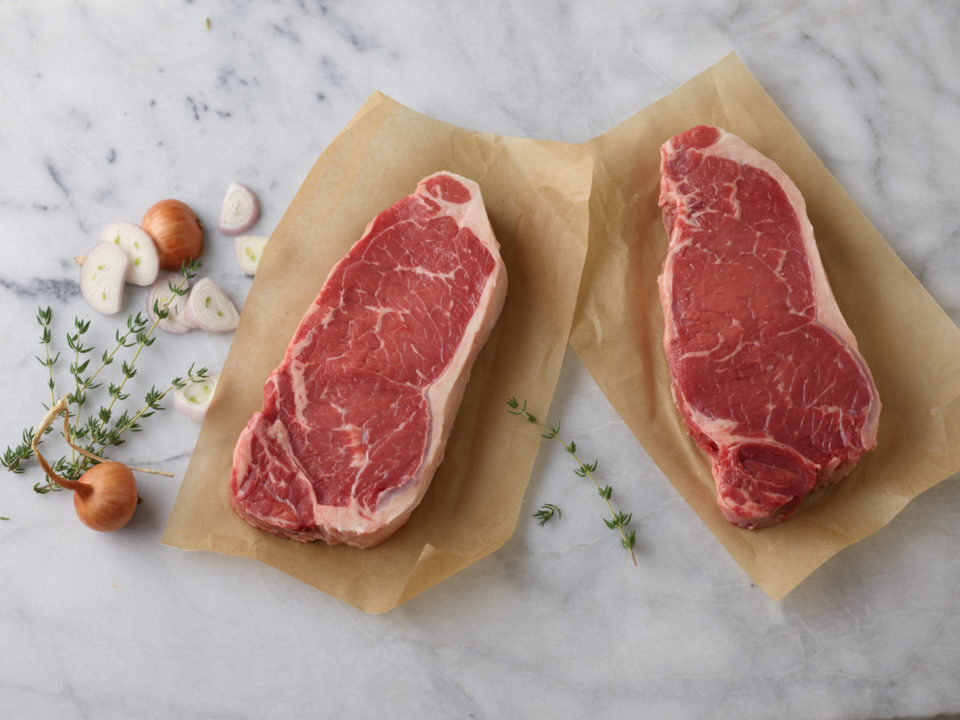
Cut from the loin—the area right below the backbone and from where many premium steaks are cut—the Natural Angus New York strip steak is a tender cut perfect for grilling. With elegant, refined flavor and its steakhouse origins, this cut has become an iconic, go-to steak.
Try this simple two-ingredient marinade to achieve a delicious, caramelized flavor on the grill: Bourbon Street New York Strip. Or prepare tender, hearty New York strip with this recipe for Braised Steak and Onions.
Other great cuts from the loin primal: T-bone, porterhouse, and beef tenderloin.
Natural Angus Top Sirloin: Lean & Oh-So-Tasty

The sirloin primal is divided into two sections: top sirloin and bottom sirloin. The top is ideal for grilling, while the bottom works well for roasting. Top sirloin steak is cut from the top area, making it incredibly flavorful. Although it works well for grilling, it’s an incredibly versatile cut—serve it as a steak, slice it up for stir fry, or cut it up for kabobs. You can also prepare it in the smoker, under the broiler, sous vide, or in a skillet.
Make a simple but delicious salad with this recipe for Lemon-Pepper Beef Top Sirloin Steak Salad, or create a comforting, rich flavor with Braised Sirloin Tips over Rice.
Other great cuts from the sirloin primal: Tri-tip steak.
Natural Angus Chuck Roast: Perfect for the Slow Cooker
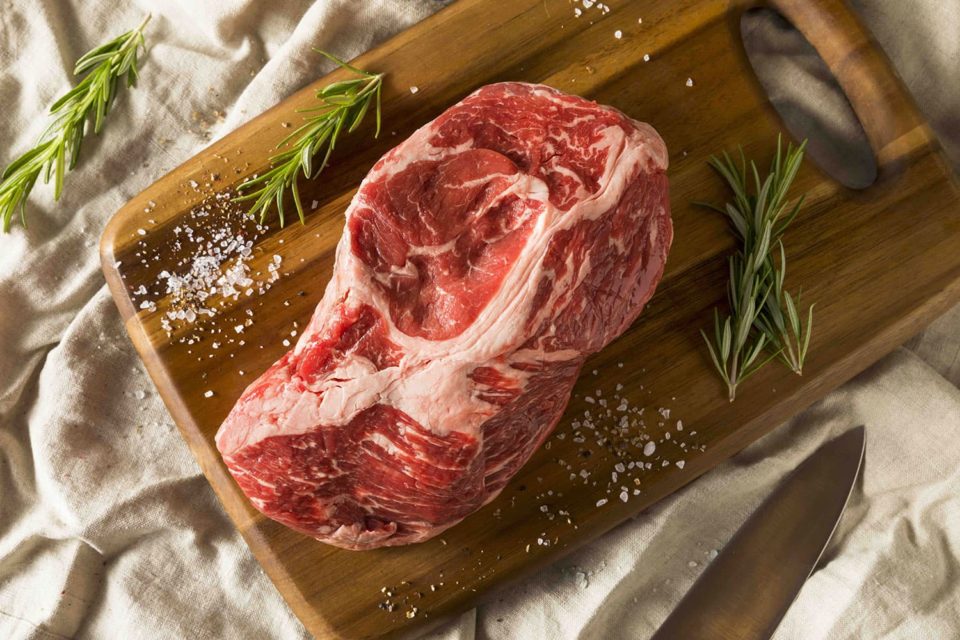
Near the shoulder of the cattle, the chuck area is tougher than some areas, as it supports the weight of the cattle throughout its lifespan. However, this primal produces a rich, beefy flavor that you won’t want to miss out on. Slow cooking and braising are the best ways to add tenderness and fully bring out the flavor.
There are a few different cuts of chuck roasts, but you can’t go wrong with the classic Chuck Roll Roast. This easy recipe combines Aspen Ridge Natural Angus Beef, red wine, vegetables, and herbs for comfort food the whole family will love.
Other great cuts from the chuck primal: Chuck steak, under blade, and top blade.
Natural Angus Country-Style Ribs: Meaty and Boneless
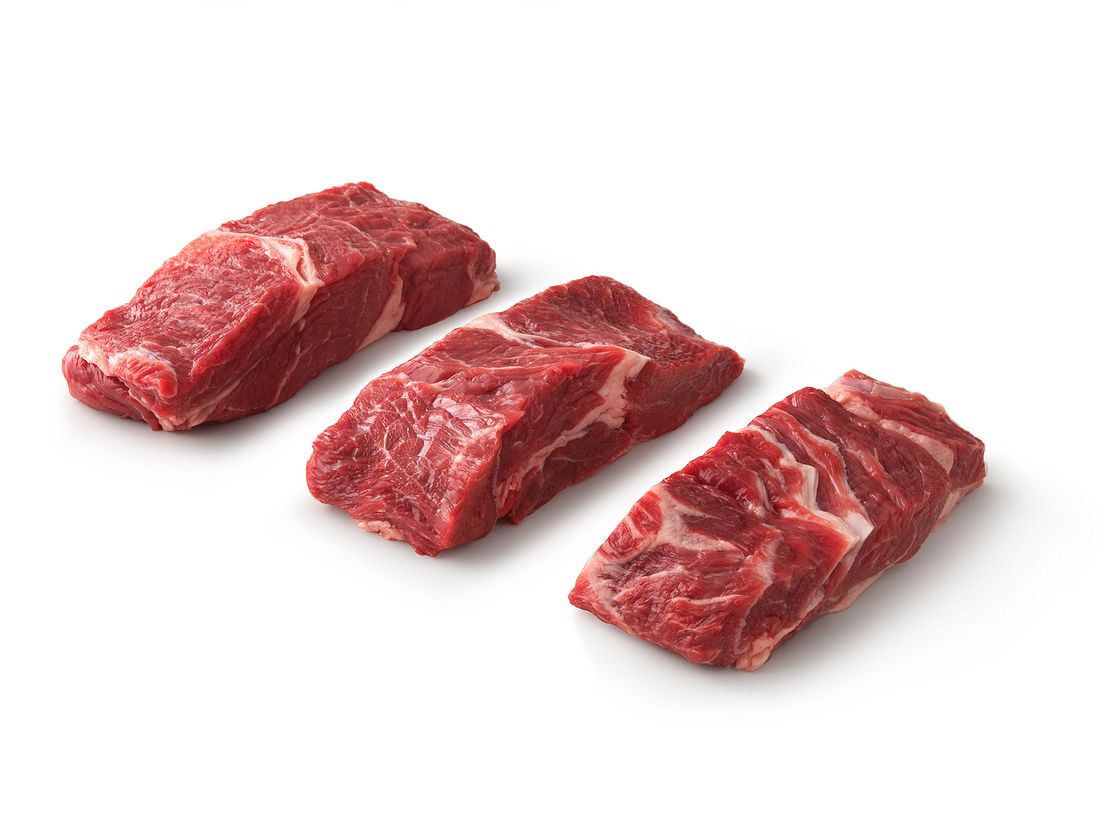
Image courtesy of Beef. It’s What’s for Dinner.
Also cut from the chuck area, Natural Angus country-style ribs are made by splitting a chuck eye steak in half lengthwise. Slow cook them on the stovetop or in a pressure cooker, and for a little char, consider finishing them on the grill. Savor a delicious blend of sweet and spicy with Asian Sweet & Spicy Ribs. Or find a new game-day favorite with these Buffalo-Style Beef Bites.
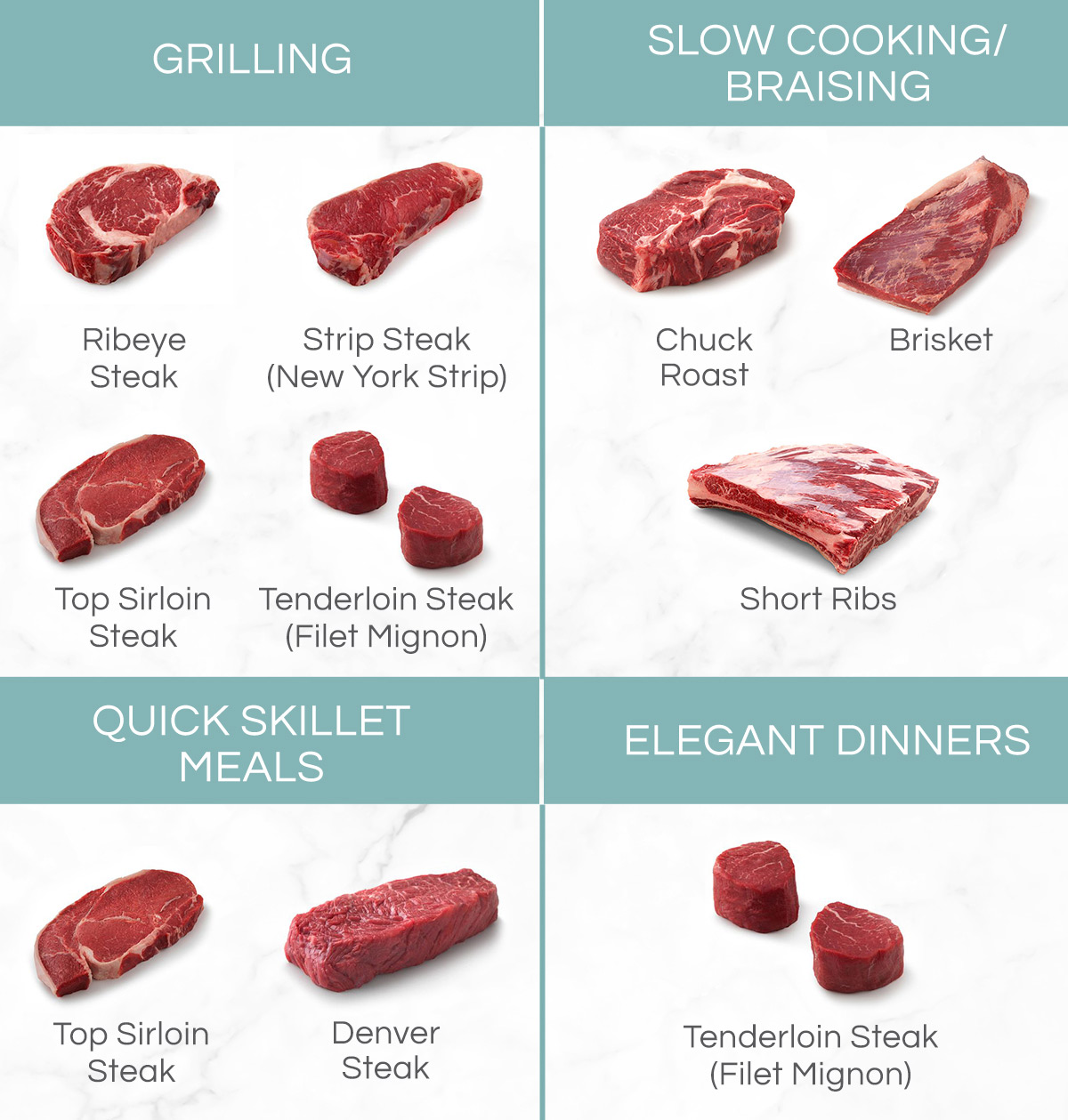
Frequently Asked Question: Are Tenderloin Steak and Filet Mignon the Same Thing?
In short, yes! But there is a subtle difference.
Tenderloin, a subprimal, comes from the loin primal that is known for producing the most tender steaks. From the tenderloin, we get the tenderloin roast, tenderloin tips, tenderloin tails, and, most famously, the filet mignon.
All filet mignon is tenderloin steak, but not all tenderloin steak is filet mignon. Filet mignon comes from the narrowest, most tender end of the tenderloin. “Tenderloin steak,” on the other hand, refers more broadly to any cut from the tenderloin subprimal, which can vary slightly in size and shape. Both cuts are exceptionally tender, but filet mignon is considered the most premium due to its buttery texture and elegant presentation. You’ll find both listed under the loin column of the chart above. Tenderloin and filet mignon are versatile, too. You can grill them, sear them in a skillet, reverse sear them, broil them, or prepare them via sous vide.
Try out our favorite natural Angus tenderloin recipes and make the most of these elegant, celebrated cuts. You can use filet mignon or the tenderloin in all of these.
- Turmeric and Garlic Tenderloin Steak with Grilled Cauliflower
- Tenderloin Steak with Olive and Artichoke Tapenade
- Tenderloin Steak Cobb Salad with Horseradish Vinaigrette
There’s Even More Beef Knowledge in Store
Want to learn more about beef cuts? Check out our blog post, Preparing Versatile Cuts of Natural Angus Beef, for cooking tips for ground beef, top round steak, and more. Also, learn about different beef cooking methods and which cuts of steak are best for each method.
This article was originally published in June 2020 but was updated in May 2025.



